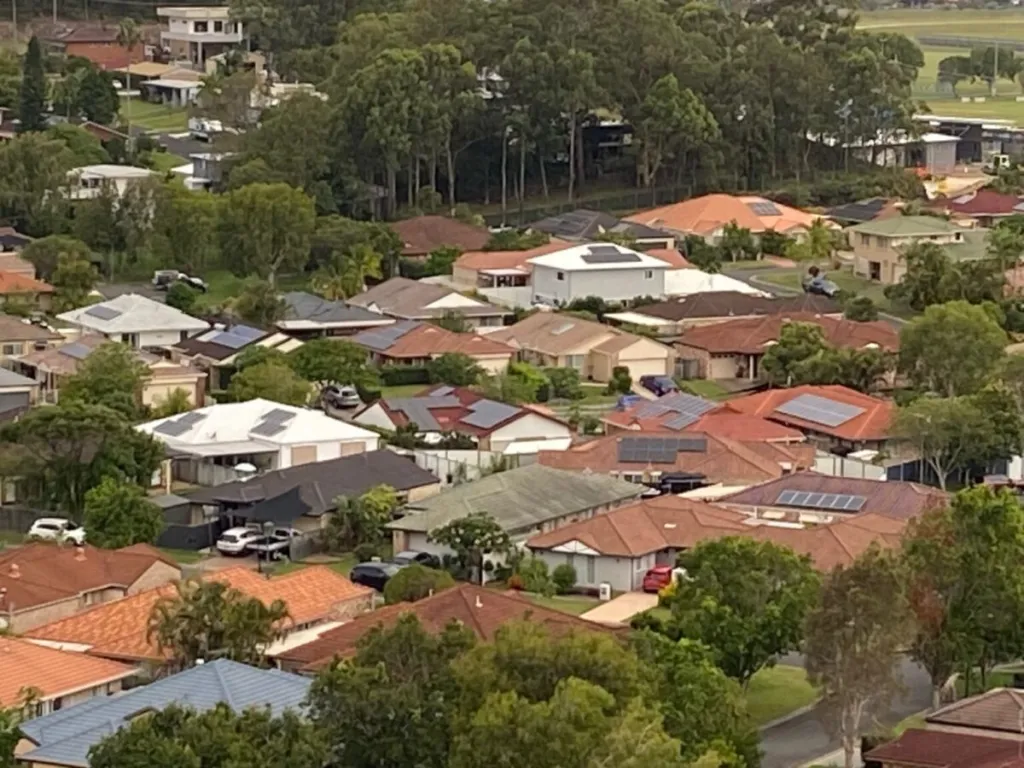The Australian Energy Market Operator (AEMO) is pushing for the widespread implementation of “emergency backstop” measures to remotely switch off or dial down rooftop solar systems. It aims to manage the growing impact of distributed PV on the nation’s electricity grid.

Image: pv magazine
From pv magazine Australia
As the rise of rooftop solar continues to reshape Australia’s energy systems, the market operator, the AEMO, has called for emergency backstop regulatory frameworks to be in place in all mainland states by the end of 2025. It wants to manage the energy from the country’s more than 4 million rooftop PV installations.
AEMO said that rooftop solar is already supplying more than half of the nation’s electricity demand at times, and this is projected to grow to about 90% in the next few years. This growth has introduced challenges of grid instability during low-demand periods and AEMO said that actions must be taken to maintain the supply and demand balance.
In a newly published report, “Supporting secure operation with high levels of distributed resources,” AEMO said backstop mechanisms are needed to ensure rooftop solar can be remotely dialed down, or disconnected, to manage system security. This is similar to the capabilities normally required of any large-scale generator.
Michael Gatt, AEMO’s executive general manager of operations, said the market operator doesn’t not want to directly control people’s rooftop solar, but noted that in “rare circumstances” it may need to take action to secure the grid.
“We’re aware that high contributions of rooftop solar coinciding with certain system conditions needs to be carefully managed to ensure electricity reliability and grid security while managing power system risks,” he said. “For several years, AEMO has flagged these emerging risks and with the support of state governments and network operators are developing appropriate emergency solutions. These actions assist in keeping the power system secure, while also enabling the growth of rooftop solar installations.”
Rooftop solar management programs are already active in South Australia, Queensland, Victoria and Western Australia but AEMO said that to maintain system security, all mainland states need operationally effective emergency backstop capabilities “as soon as possible.”
This would include extending backstop application to all distributed PV systems in Queensland, implementing a backstop mechanism in New South Wales and the Australian Capital Territory, and implementing effective monitoring and enforcement regimes to increase compliance in all states.
AEMO said that remote management of rooftop solar would be used only as a last resort and that it has other operational actions available to maintain system security. These other measures include constraining grid-scale generation, increasing demand by directing large consumers into service, and investing in new assets such as synchronous condensers.
AEMO also pointed to the ability of battery energy storage and its capacity to “move energy from daytime periods to other periods” to help manage the impact of rooftop solar on the grid. The market operator said this capability is very limited at present, but will likely increase due to increased investment in storage technologies, and through the coordination of household batteries.
Gatt said that after all these actions have been exhausted, the temporary management of rooftop solar by network operators under state government solar management programs may still be required, “although we expect this may only occur in very rare circumstances.”
This content is protected by copyright and may not be reused. If you want to cooperate with us and would like to reuse some of our content, please contact: editors@pv-magazine.com.
Source from pv magazine
Disclaimer: The information set forth above is provided by pv-magazine.com independently of Alibaba.com. Alibaba.com makes no representation and warranties as to the quality and reliability of the seller and products. Alibaba.com expressly disclaims any liability for breaches pertaining to the copyright of content.




